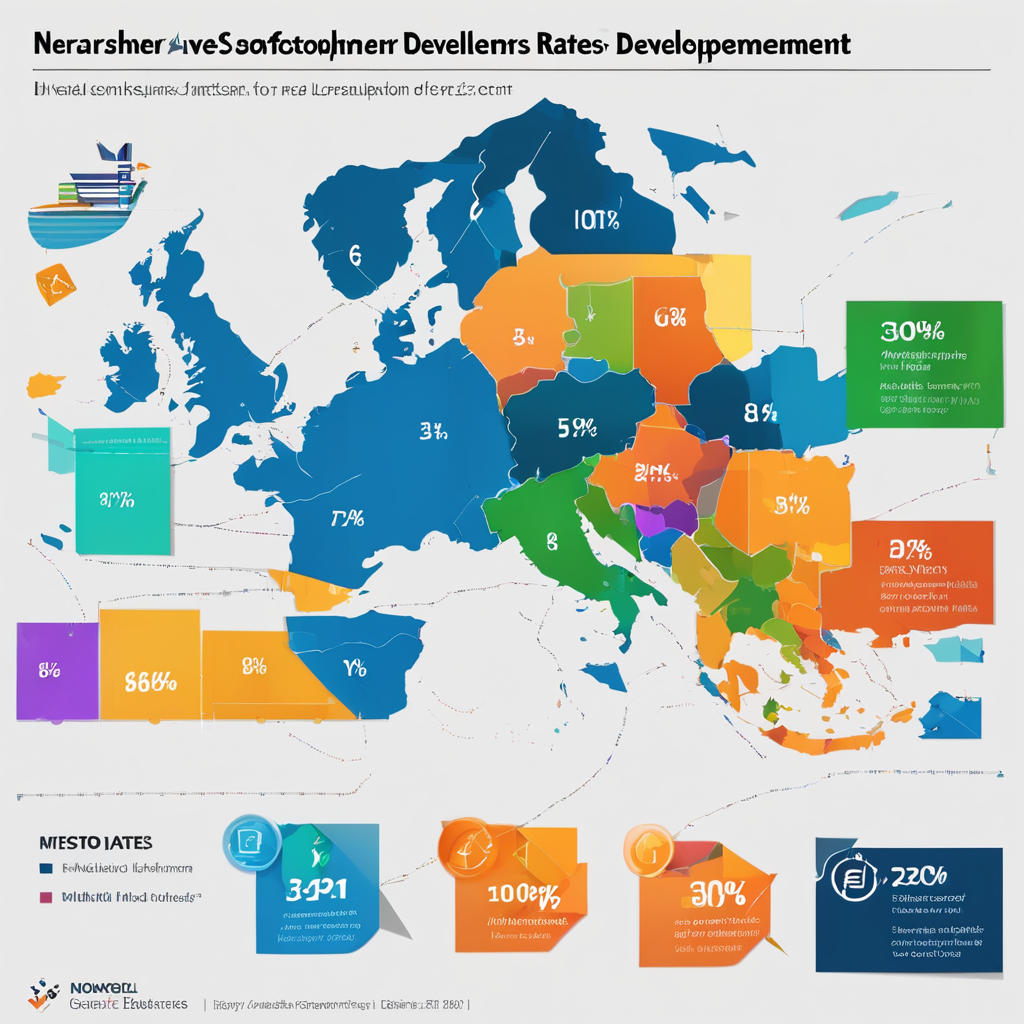Nearshore software development rates have become a crucial topic in the tech industry, as companies seek cost-effective solutions while maintaining high-quality standards. Nearshore software development involves outsourcing projects to companies in neighboring or nearby countries, often with similar time zones and cultural understanding. This approach offers various benefits, including reduced costs compared to onshore development and easier communication due to fewer language barriers.
One of the key factors influencing nearshore software development rates is the location of the service provider. Countries such as Mexico, Brazil, and Eastern European nations like Ukraine and Poland are popular choices for nearshore development due to their skilled workforce and competitive pricing. These regions offer a cost advantage compared to onshore development in countries like the United States or Western Europe, making them attractive options for companies looking to optimize their development budget.
In addition to location, the level of expertise and experience of the development team also plays a significant role in determining nearshore software development rates. Companies with highly skilled developers and specialized knowledge in areas like AI, blockchain, or IoT may command higher rates due to the added value they bring to the project. On the other hand, teams with less experience or expertise in niche technologies may offer more competitive pricing to attract clients and build their portfolio.
The complexity of the software project is another crucial factor that influences nearshore development rates. Projects requiring advanced technical skills, intricate problem-solving, or innovative solutions may incur higher costs due to the specialized expertise and resources needed to deliver the desired outcomes. On the other hand, simpler projects with standard requirements and well-defined scopes are likely to have lower development rates, as they involve less time and effort from the development team.
Furthermore, the size and duration of the software development project can impact the overall rates charged by nearshore service providers. Larger projects that span several months or require dedicated teams may come with volume discounts or customized pricing models to accommodate the scale and scope of the work. Short-term projects or smaller tasks may have fixed rates or hourly pricing structures to ensure transparency and cost-effectiveness for both parties involved.
Communication and collaboration are essential aspects of nearshore software development that can affect the rates and overall success of the project. Clear communication channels, regular updates, and effective project management practices help streamline the development process and minimize misunderstandings or delays that could impact the project timeline and budget. Establishing strong communication protocols and fostering a collaborative environment between the client and the development team are key factors in ensuring the project’s success.
Cost considerations are a primary driver for companies exploring nearshore software development options, as they seek to maximize their return on investment while delivering high-quality solutions to their customers. By carefully evaluating the various factors that influence nearshore development rates, companies can make informed decisions that align with their budget, timeline, and project requirements. Balancing cost considerations with the quality of work, expertise of the development team, and the complexity of the project is essential in selecting the right nearshore service provider that meets the company’s needs and expectations.
Ultimately, nearshore software development rates vary depending on a multitude of factors, including location, expertise, project complexity, size, duration, and communication practices. Companies should conduct thorough research, compare different service providers, and assess their offerings based on these criteria to make an informed decision that best suits their unique requirements. By understanding the dynamics of nearshore software development rates and the key factors that influence them, companies can navigate the outsourcing landscape effectively and leverage the benefits of nearshore development for their business growth and success.
In conclusion, nearshore software development rates are a critical consideration for companies seeking cost-effective and efficient solutions for their projects. By analyzing the various factors that impact development rates and understanding the nuances of the outsourcing landscape, companies can make strategic decisions that align with their budget, timeline, and quality standards. With careful planning, clear communication, and a focus on expertise and project requirements, companies can harness the advantages of nearshore software development to drive innovation, competitiveness, and success in today’s digital economy.
